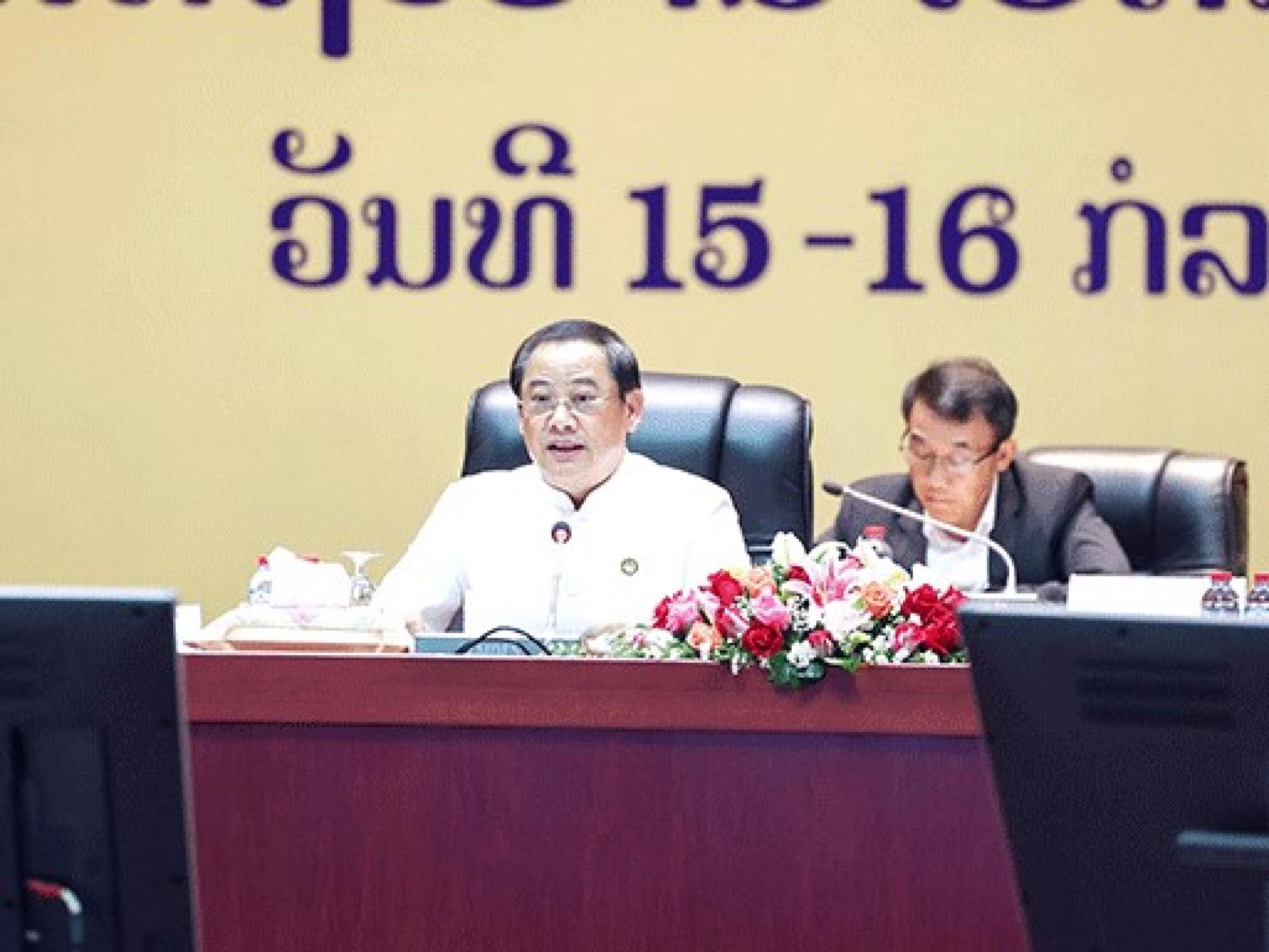(Vientiane, 18th) The Lao government held a meeting this Wednesday to formulate key priorities and action plans in response to current economic challenges, ensuring continued national economic growth and preparing for development from 2026 to 2030.
The meeting, chaired by Prime Minister Sonexay Siphandone, gathered provincial governors and representatives from key government agencies. The meeting noted that Laos achieved 4.5% GDP growth in the first half of 2025, mainly driven by strong performance in the service sector, agriculture, forestry, infrastructure development, and exports.
According to government reports, dry season rice production has reached 423,800 tons, accomplishing 94% of the annual target. The export value of agriculture and forestry reached US$1.12 billion, accounting for 75% of the annual plan. In terms of national finances, the government collected 37,758 billion kip in taxes, 55% of the annual goal; expenditures totaled 28,223 billion kip, amounting to 39% of the yearly target.
As for inflation, the average inflation rate for the first half of this year was 11%, and it is expected to drop to single digits by the end of the year. Regarding foreign exchange reserves, they can currently cover 4.9 months of imports, and this is expected to reach 5 months by December.
Further, the government continues to oversee gold and rare earth mine inspections and has suspended the approval of new mining contracts. In principle, the meeting also approved lists of national road construction and improvement projects starting in 2026, and accelerated the development of expressways and railways, including the China-Laos Expressway (Oudomxay to Boten section), the Vientiane-Hanoi Expressway, as well as the Vientiane-Thakhek-Long An Railway.
In terms of land management, the government issued 76,900 land ownership certificates, accounting for 26% of the annual target. Facing the issue of teacher shortages, the government decided to increase allowances for intern teachers, grant volunteer teachers civil servant status, and deploy soldiers to assist with teaching tasks.
The health sector has also made progress, with improvements in central and local medical facilities and staff training. The meeting reiterated its commitment to complete the evaluation of the 9th National Socio-Economic Development Five-Year Plan (2021-2025) as scheduled, and to continue drafting the 10th Five-Year Plan (2026-2030) and the 2026 annual plan for submission to the National Assembly.
The meeting also confirmed the priority to resolve challenges such as teacher and labor shortages, dropout rates, salary issues, fuel price fluctuations, illegal importation of vehicles, illegal trade, electricity fee adjustments, and the 40% tariff increase imposed by the United States on Laos exports.
The government also, in principle, approved several proposals, including stabilizing prices of daily necessities and fuel, supporting the local product production fund, and plans for rainy season exports.
The meeting, chaired by Prime Minister Sonexay Siphandone, gathered provincial governors and representatives from key government agencies. The meeting noted that Laos achieved 4.5% GDP growth in the first half of 2025, mainly driven by strong performance in the service sector, agriculture, forestry, infrastructure development, and exports.
According to government reports, dry season rice production has reached 423,800 tons, accomplishing 94% of the annual target. The export value of agriculture and forestry reached US$1.12 billion, accounting for 75% of the annual plan. In terms of national finances, the government collected 37,758 billion kip in taxes, 55% of the annual goal; expenditures totaled 28,223 billion kip, amounting to 39% of the yearly target.
As for inflation, the average inflation rate for the first half of this year was 11%, and it is expected to drop to single digits by the end of the year. Regarding foreign exchange reserves, they can currently cover 4.9 months of imports, and this is expected to reach 5 months by December.
Further, the government continues to oversee gold and rare earth mine inspections and has suspended the approval of new mining contracts. In principle, the meeting also approved lists of national road construction and improvement projects starting in 2026, and accelerated the development of expressways and railways, including the China-Laos Expressway (Oudomxay to Boten section), the Vientiane-Hanoi Expressway, as well as the Vientiane-Thakhek-Long An Railway.
In terms of land management, the government issued 76,900 land ownership certificates, accounting for 26% of the annual target. Facing the issue of teacher shortages, the government decided to increase allowances for intern teachers, grant volunteer teachers civil servant status, and deploy soldiers to assist with teaching tasks.
The health sector has also made progress, with improvements in central and local medical facilities and staff training. The meeting reiterated its commitment to complete the evaluation of the 9th National Socio-Economic Development Five-Year Plan (2021-2025) as scheduled, and to continue drafting the 10th Five-Year Plan (2026-2030) and the 2026 annual plan for submission to the National Assembly.
The meeting also confirmed the priority to resolve challenges such as teacher and labor shortages, dropout rates, salary issues, fuel price fluctuations, illegal importation of vehicles, illegal trade, electricity fee adjustments, and the 40% tariff increase imposed by the United States on Laos exports.
The government also, in principle, approved several proposals, including stabilizing prices of daily necessities and fuel, supporting the local product production fund, and plans for rainy season exports.
